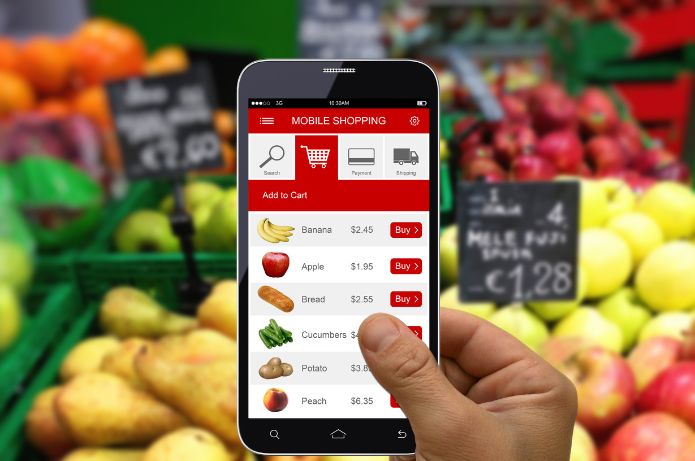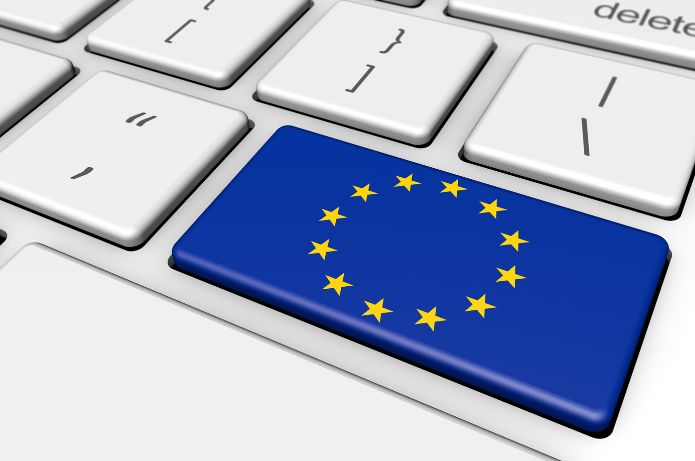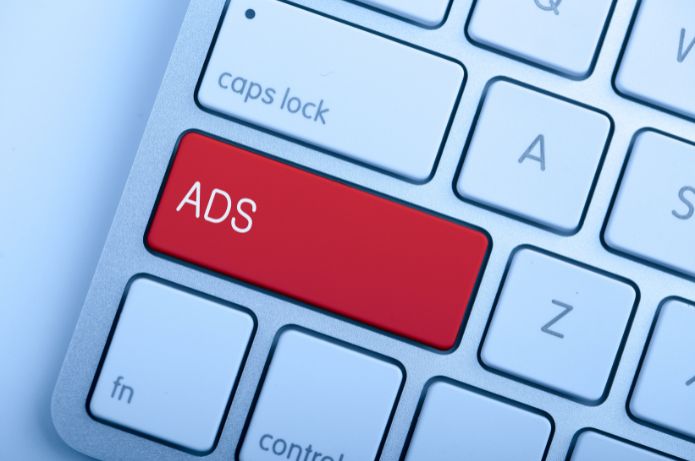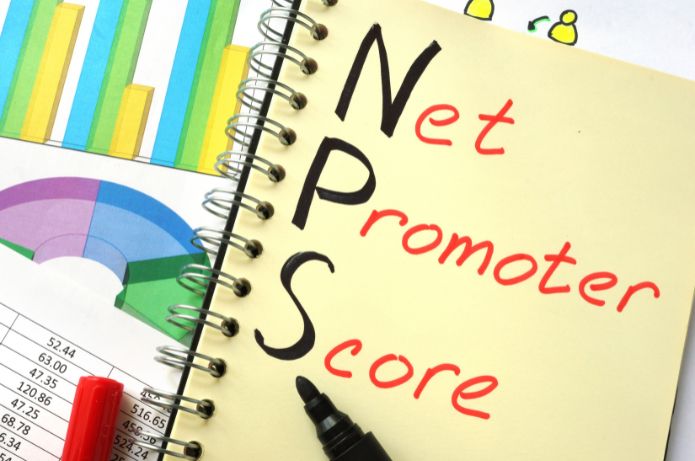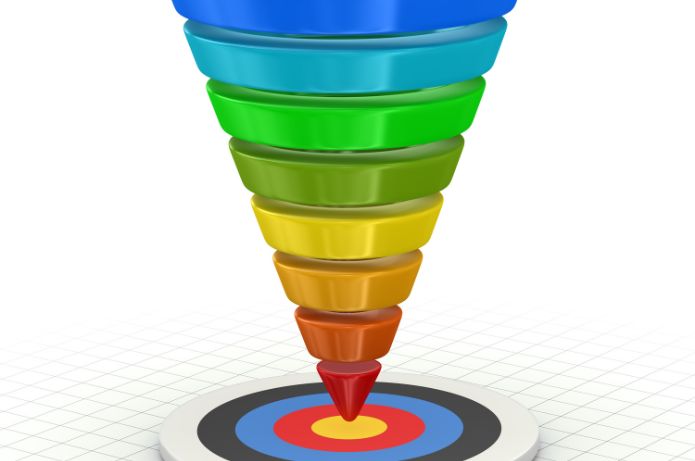Introduction:
The Sales Funnel, also known as the Conversion Funnel or Sales Pipeline, is a fundamental concept in marketing and sales. It visually represents the process potential customers go through, from their first contact with a company or product to their final purchase. This model helps organizations understand and optimize the customer journey, identifying areas for improvement and conversion opportunities at each stage of the process.
1. Definition and Concept:
The Sales Funnel is a metaphorical representation of the path a potential customer takes from the moment they learn about a product or service until they make a purchase. The funnel format is used because, typically, the number of people who purchase decreases as they progress through the stages of the buying process.
2. Basic Structure of the Sales Funnel:
2.1. Top of the Funnel (ToFu – Top of the Funnel):
– Awareness: At this stage, the goal is to attract the attention of as many potential customers as possible.
– Strategies: Content marketing, advertising, social media, SEO.
2.2. Middle of the Funnel (MoFu – Middle of the Funnel):
– Consideration: Leads begin to evaluate the options available in the market.
– Strategies: Email marketing, webinars, case studies, product demonstrations.
2.3. Bottom of the Funnel (BoFu):
– Decision: The potential customer is ready to make a choice.
– Strategies: Personalized offers, free trials, individual consultations.
3. Importance of the Sales Funnel:
3.1. Process Mapping: Helps visualize and understand each step of the customer journey.
3.2. Bottleneck Identification: Allows you to identify where leads are abandoning the process.
3.3. Resource Optimization: Facilitates the efficient allocation of marketing and sales resources.
3.4. Sales Forecasting: Helps predict future revenue based on lead flow.
4. Important Metrics:
4.1. Conversion Rate: Percentage of leads that advance from one stage to another.
4.2. Sales Cycle Time: Average duration of the process from first contact to sale.
4.3. Cost per Lead: Investment required to attract each potential customer.
4.4. Average Sales Value: Average revenue generated by each converted customer.
5. Evolution of the Concept:
5.1. Traditional vs. Modern Sales Funnel:
– Traditional: Linear and unidirectional.
– Modern: Non-linear, considering multiple points of contact and interactions.
5.2. Omnichannel Sales Funnel:
Integrates different communication and sales channels, offering a cohesive customer experience.
6. Strategies for Funnel Optimization:
6.1. Audience Segmentation: Personalize the approach for different customer profiles.
6.2. Lead Nurturing: Nurture relationships with relevant content over time.
6.3. Marketing Automation: Use tools to automate interactions and monitoring.
6.4. Data Analysis: Use data-driven insights to refine strategies.
7. Common Challenges:
7.1. Alignment between Marketing and Sales: Ensure that both teams work in sync.
7.2. Lead Qualification: Correctly identify leads most likely to convert.
7.3. Personalization at Scale: Deliver personalized experiences to a large number of leads.
7.4. Adapting to Changes in Consumer Behavior: Keep the funnel updated according to market trends.
8. Sales Funnel in the Digital Context:
8.1. Inbound Marketing: Attract customers through relevant and non-intrusive content.
8.2. Retargeting: Reconnecting with leads who have shown prior interest.
8.3. Social Selling: Use social networks to build relationships and generate sales.
9. Tools and Technologies:
9.1. CRM (Customer Relationship Management): Systems for managing customer interactions.
9.2. Marketing Automation Platforms: Tools for automating campaigns and nurturing.
9.3. Analytics: Solutions for data analysis and insight generation.
10. Future Trends:
10.1. AI and Machine Learning: Using artificial intelligence to predict behaviors and personalize interactions.
10.2. Augmented and Virtual Reality: Immersive experiences for customer engagement.
10.3. Hyperpersonalization: Offering highly customized experiences based on detailed customer data.
Conclusion:
The Sales Funnel is an essential tool for companies looking to understand and optimize their customer conversion process. By mapping the customer journey and identifying opportunities for improvement at each stage, organizations can significantly increase their conversion rates and improve the overall customer experience.
11. Practical Implementation of the Sales Funnel:
11.1. Mapping the Current Process:
– Identify all existing steps in the sales process.
– Analyze customer contact points at each stage.
11.2. Defining Objectives:
– Set clear goals for each stage of the funnel.
– Determine relevant KPIs (Key Performance Indicators).
11.3. Creation of Specific Content:
– Develop appropriate materials for each phase of the funnel.
– Align content with customer needs and questions at each stage.
11.4. Implementation of Monitoring Systems:
– Use CRM tools to track lead progress.
– Set up alert systems for leads that require attention.
12. The Role of Consumer Psychology in the Sales Funnel:
12.1. Emotional Triggers:
– Use elements that appeal to consumers’ emotions at different stages.
– Understand the motivations underlying purchasing decisions.
12.2. Principle of Scarcity:
– Apply tactics that create a sense of urgency and exclusivity.
12.3. Social Proof:
– Incorporate testimonials, reviews, and success stories throughout the funnel.
13. Sales Funnel for Different Business Models:
13.1. E-commerce:
– Focus on cart abandonment and re-engagement tactics.
– Using remarketing to win back visitors.
13.2. B2B (Business-to-Business):
– Longer and more complex sales cycles.
– Emphasis on building relationships and demonstrating long-term value.
13.3. SaaS (Software as a Service):
– Use free trials and demos as a crucial part of the funnel.
– Focus on efficient onboarding and customer retention.
14. Integrating the Sales Funnel with After-Sales:
14.1. Customer Success:
– Ensure customer satisfaction after purchase.
– Identify upsell and cross-sell opportunities.
14.2. Loyalty Programs:
– Implement strategies to keep customers engaged and loyal.
14.3. Feedback Loop:
– Use post-sale insights to improve previous stages of the funnel.
15. Advanced Metrics and Data Analysis:
15.1. Lifetime Value (LTV):
– Calculate the total value that a customer generates throughout their relationship with the company.
15.2. Churn Rate:
– Monitor customer churn rates and identify patterns.
15.3. Cohort Analysis:
– Group customers based on common characteristics for more accurate analysis.
16. Ethical and Privacy Challenges:
16.1. Regulatory Compliance:
– Adapt strategies to comply with laws such as GDPR, CCPA, LGPD.
16.2. Transparency:
– Be clear about how customer data is collected and used.
16.3. Opt-in and Opt-out:
– Give customers control over their information and communication preferences.
Final Conclusion:
The Sales Funnel is much more than a simple visual representation of the sales process. It's a strategic tool that, when implemented and optimized correctly, can significantly transform a company's results. By deeply understanding each stage of the funnel, organizations can create personalized and relevant experiences for their prospects, increasing conversion rates and building lasting relationships.
As consumer behavior evolves and new technologies emerge, the concept of the Sales Funnel will continue to adapt. Companies that remain agile, customer-focused, and willing to innovate in their sales and marketing approaches will be better positioned to achieve success in today's competitive market.
Ultimately, the Sales Funnel isn't just about converting leads into customers, but about creating a cohesive, informative, and satisfying customer journey that benefits both the company and the consumer. By implementing the strategies, tools, and insights discussed in this article, organizations can create an effective sales funnel that not only generates results but also builds a solid foundation for sustainable growth and long-term success.

